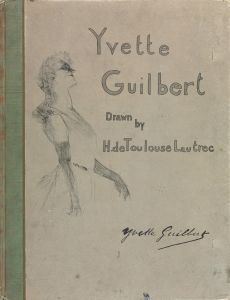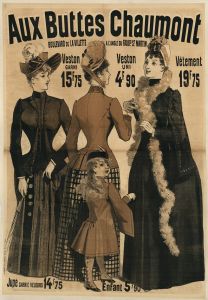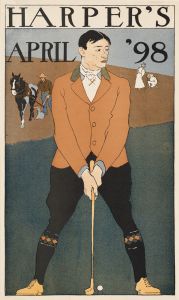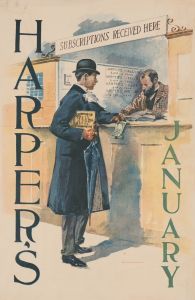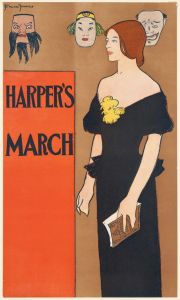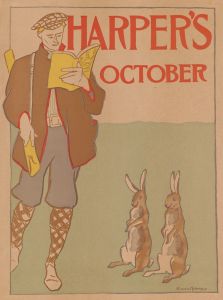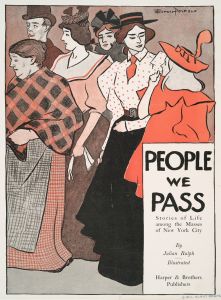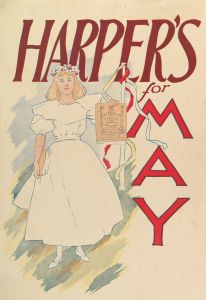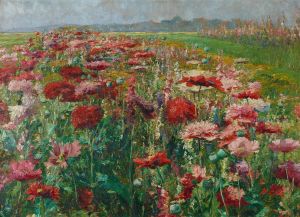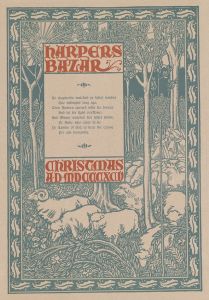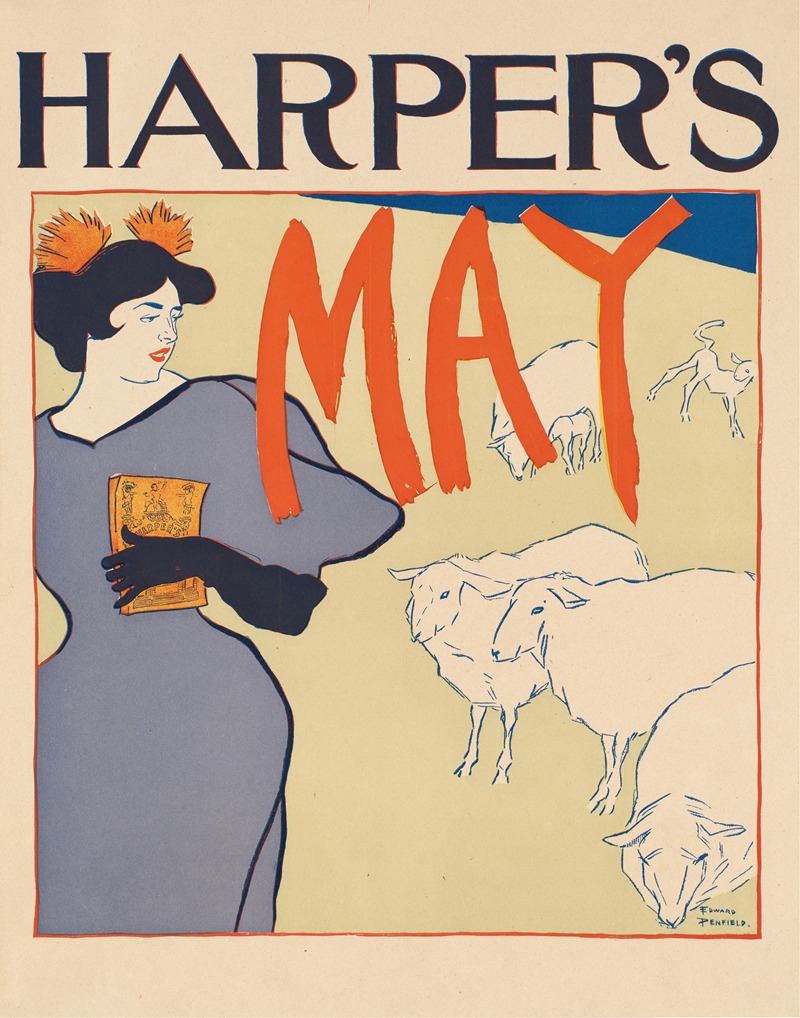
Harper’s May
A hand-painted replica of Edward Penfield’s masterpiece Harper’s May, meticulously crafted by professional artists to capture the true essence of the original. Each piece is created with museum-quality canvas and rare mineral pigments, carefully painted by experienced artists with delicate brushstrokes and rich, layered colors to perfectly recreate the texture of the original artwork. Unlike machine-printed reproductions, this hand-painted version brings the painting to life, infused with the artist’s emotions and skill in every stroke. Whether for personal collection or home decoration, it instantly elevates the artistic atmosphere of any space.
Edward Penfield (1866-1925) was an influential American illustrator and a key figure in the development of American graphic design during the late 19th and early 20th centuries. One of his notable works is "Harper’s May," created in 1896 as a cover illustration for Harper's Magazine. This piece exemplifies Penfield's distinctive style and his contribution to the art of poster design.
"Harper’s May" is a prime example of Penfield's ability to blend simplicity with striking visual impact. The illustration features a woman dressed in a fashionable, turn-of-the-century outfit, holding an umbrella and a copy of Harper's Magazine. The background is relatively plain, which helps to draw attention to the central figure and the magazine she is holding. The use of bold, flat colors and clear lines is characteristic of Penfield's work and reflects the influence of the Art Nouveau movement, which was popular at the time.
Penfield's work for Harper's Magazine, including "Harper’s May," played a significant role in the evolution of magazine cover design. His covers were not just illustrations but also served as effective marketing tools, capturing the essence of the magazine's content and appealing to a broad audience. Penfield's designs often featured everyday scenes and relatable characters, making them accessible and engaging to the public.
The significance of "Harper’s May" extends beyond its aesthetic appeal. It represents a period in American history when magazines were becoming a dominant form of media, and cover art was crucial in attracting readers. Penfield's ability to create visually compelling and thematically relevant covers helped Harper's Magazine stand out in a competitive market.
Edward Penfield's contributions to graphic design and illustration were widely recognized during his lifetime. He served as the art director for Harper's Magazine from 1891 to 1901, a period during which he produced many memorable covers. His work influenced subsequent generations of illustrators and designers, and his legacy continues to be celebrated in the field of graphic arts.
In summary, "Harper’s May" by Edward Penfield is an important work in the history of American illustration and graphic design. It showcases Penfield's talent for creating visually appealing and effective magazine covers, reflecting the cultural and artistic trends of the late 19th century. Penfield's influence on the field of graphic design remains significant, and his work continues to be studied and admired for its artistic and historical value.






